Magma
Type of resources
Available actions
Topics
Keywords
Contact for the resource
Provided by
Years
Formats
Representation types
Update frequencies
-
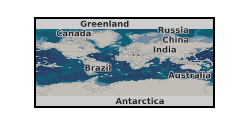
Vesicularity (phi) as a function of time for samples of natural hydrated silicate glass (obsidian) from optical dilatrometric analysis. Also numerical model for analysis of dataset and associated user guide.
-

Raw mechanical data from currently unpublished sintering experiments using glass beads in a triaxial pressure vessel as well as porosity, permeability results of sintering under constant (uniaxial) load. These experiments will be submitted for publication in the future. All data were collected from 2021 onwards and analysed at LMU Munich. Synthetic glass bead samples are sintered to a target porosity in a furnace to make uniform (homogeneous) porous glass samples, before being cooled, measured for porosity and permeability and then placed in a furnace either: 1) in a uniaxial press; or 2) a triaxial pressure vessel. In 1) a constant load is applied for 3 or 5h; In 2) a hydrostatic or deviatoric stress is applied for variable amount of time while the permeability evolution is constantly measured. These experiments impart physical changes to the porous samples. All samples porosity and permeability (using constant flow rate and nitrogen as a permeating fluid) are also measured post-experiment. Sintered glass beads act as an analogue for magmas. Understanding the evolution of transient porous network in magmas is key to understanding pore pressure evolution in volcanic conduits, which controls effusive-explosive transitions
-

The project data provided herein represents the U-Pb geochemical data for a suite of magmas from Co. Donegal, Ireland. The aim of this data set is the identification of magmatic and inherited zircon grains. The samples were collected in Donegal in 2023 by Dempsey. Within the data Fan = Fanad Granite, Ard = Ardara Granite, MDG = main Donegal granite, Tull = Tullagh Granite, Thor = Thorr Granite. Crushed an separated in Glasgow by Dempsey (23-24). Prepared in Hull and Glasgow (24). Analysed in Hull Laser Ablation Facility by Dempsey (24-25). Processed by Dempsey (25) The Trace element profiles of the magmatic grains, cathode luminescence imagery and the machine learning algorithm will be included upon completion. Raw data is in the form of .xls .seq and .io files which can be opened using the Iolite data processing software. The processed data is in the form of excel spread sheets with isochrons produced using Isoplotr. The contents of rows and columns in these datasets are labelled within the .xls file. The .xls files also include the operation conditions for the laser system and mass spectrometer.
-

Data shows the composition (in wt. %) and the modelled temperature-viscosity relationship (800-1600 degrees) for various generic compositions of magmas and variable water contents. These data are used for the viscosity curves shown in figure 11 of Kendrick and Lavallée, 2022 (https://doi.org/10.2138/rmg.2022.87.20). The data involve only idealised compositions, not real samples, and the data was compiled at the University of Liverpool, UK. These data were compiled in 2021. The generic magma compositions were input into the open access Viscosity calculator "GRD", available at; https://www.eoas.ubc.ca/~krussell/VISCOSITY/grdViscosity.html and the resulting temperature-viscosity relationship for each generic composition was generated, providing the lines used in Fig. 11 of the review paper Kendrick and Lavallée, 2022. These data help understanding the viscosity-temperature relationship of different composition magmas with different dissolved water content.
-
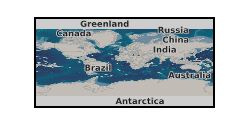
This data is described in section 6.4 of the following paper, Three-Field Block Preconditioners for Models of Coupled Magma/Mantle Dynamics by Rhebergen et al DOI:10.1137/14099718X
-
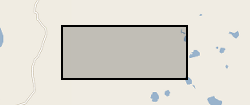
Microgravity data collected at Uturuncu Volcano located in the Altiplano-Puna Volcanic Complex, central Andes, in November 2022. Raw data collected along a survey line spanning from Laguna Colorada to Laguna Verde using a field gravimeter. All data have been preprocessed and corrected for tidal and drift effects. Data are reported with respect to reference station UBAS located to the west of Uturuncu near the Laguna Colorada.
-
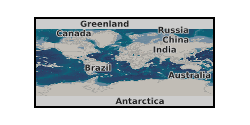
Reconstructed data - This dataset contains the reconstructed image data. Each sub-folder contains a set of 2D slices that together make up a 3D image from that time point. Not all images from all datasets have been reconstructed, the values in parentheses refer to the scan numbers that have been reconstructed. Raw data - This dataset contains the raw unprocessed image data collected during the development of the XRheo system. Processed data - This dataset contains the post-processing outputs from analysis of the data from the XRheo development experiments. Each sub-folder contains the files generated during filtering, segmentation and separation of the features [M (melt), B (bubbles), X (crystals)], and the post processing analysis for size distributions and tracking. The data sets included are the results of dynamic X-ray tomography experiments performed on multiphase synthesised magmas being deformed under known temperature and strain rates for a concentric cylinder geometry.
-
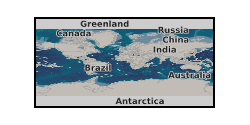
The data consists of a spreadsheet containing rheology data for 39 samples of syrup, containing air bubbles and/or spherical glass particles. These data were used by Truby et al. (2014) to support a model for the rheology of a three-phase suspension. Each sample was placed in the rheometer (concentric cylinder geometry), and the stress was stepped up and then down, taking a measurement of strain rate at each step. Further details of the experiments may be found in Truby et al. (2014). NERC grant is NE/K500999/1. Co-author working with a NERC grant, NE/G014426/1.
-
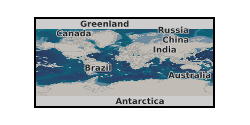
Data output from the numerical flow modelling in GRL manuscript ""Evidence for the top-down control of lava domes on magma ascent dynamics"", by Marsden, L., Neuberg, J. & Thomas, M., all of University of Leeds. The models were created using the Laminar Flow module in COMSOL Multiphysics v5.4 by L. Marsden. The following files are uploaded: Archive_Reference_Model.txt (Reference flow model: Gas loss function, Initial H2O content = 4.5 wt.% Excess pressure at depth = 10 MPa, Constant corresponding to crystal growth rate = 4e-6 s^-1 ) Archive_High_H2O.txt (Gas loss function, Initial H2O content = 10 wt.% Excess pressure at depth = 10 MPa, Constant corresponding to crystal growth rate = 4e-6 s^-1) Archive_No_Gas_Loss.txt (No gas loss, Initial H2O content = 4.5 wt.% Excess pressure at depth = 10 MPa, Constant corresponding to crystal growth rate = 4e-6 s^-1) Archive_Gamma_Low.txt (Gas loss function, Initial H2O content = 4.5 wt.% Excess pressure at depth = 10 MPa, Constant corresponding to crystal growth rate = 1e-6 s^-1) Archive_Excess_Pressure_0MPa.txt (Gas loss function, Initial H2O content = 4.5 wt.% Excess pressure at depth = 0 MPa, Constant corresponding to crystal growth rate = 4e-6 s^-1) Archive_Excess_Pressure_20MPa.txt (Gas loss function, Initial H2O content = 4.5 wt.% Excess pressure at depth = 20 MPa, Constant corresponding to crystal growth rate = 4e-6 s^-1) The files uploaded include the reference flow model and where a single key parameter has been changed in the flow modelling. We include data where the key parameter is at the upper or lower limit of the values tested. Data are not included where magma ascent is modelled to stall without the extrusion of a lava dome, as a time dependent model is not run in this case. A solution is provided using equilibrium modelling only. The following variables are output, at conduit centre unless specified: Depth (m), Time(s), Ascent velocity (m/s), Bulk Viscosity (Pa s), Crystal Content, Dome height (m), Gas Volume Fraction, Overpressure (Pa), Shear Stress at Conduit Wall (Pa)
-
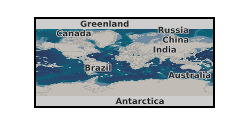
Here, we provide data corresponding to the experimental conditions used, the results gained via electron microprobe for natural and experimental volcanic samples. Mass balance calculations and a compilation of monitoring data for recent explosive eruptions.
 NERC Data Catalogue Service
NERC Data Catalogue Service